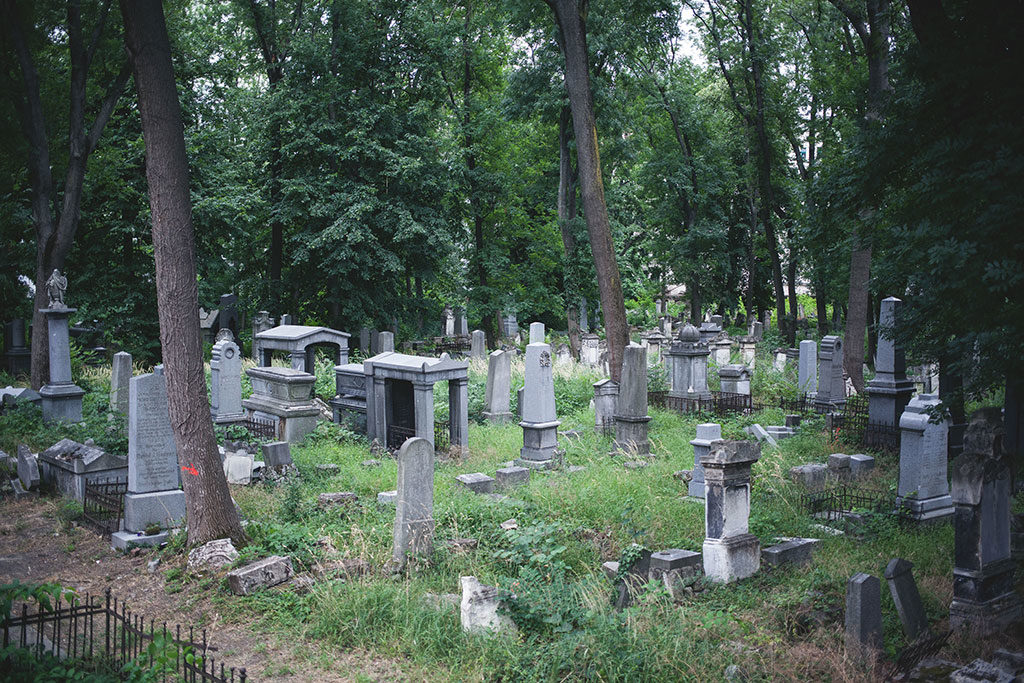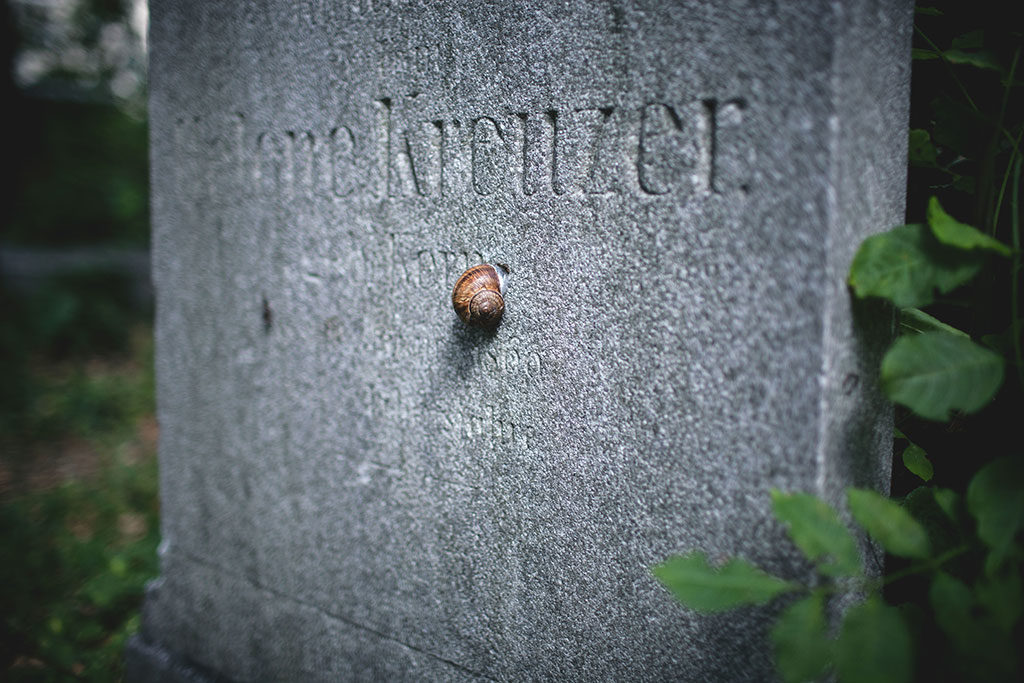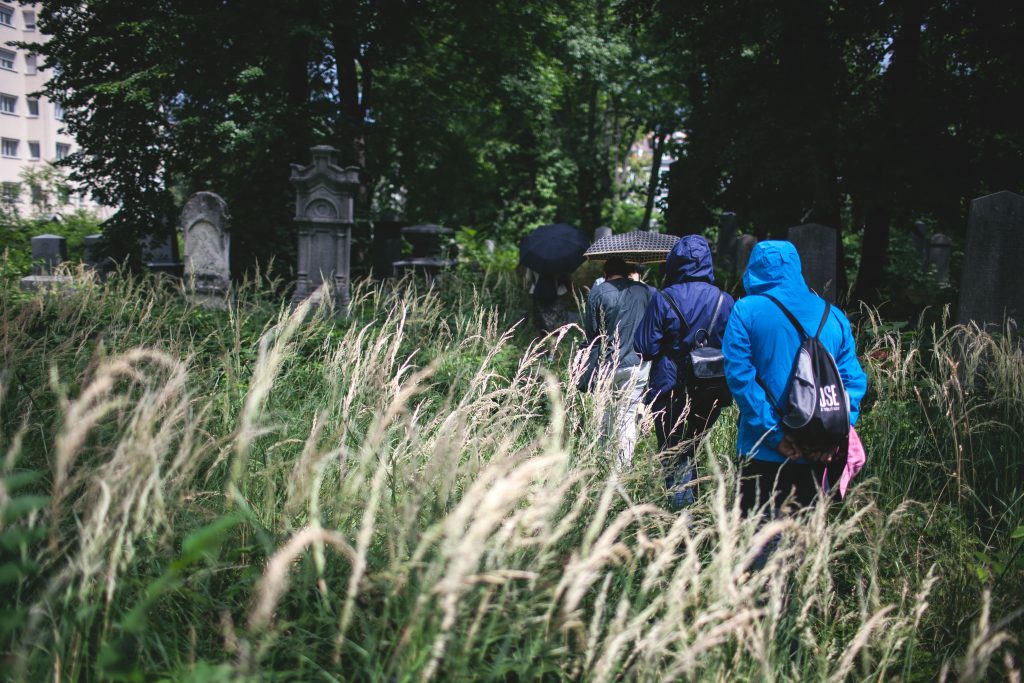Cemetery
History of the Jewish cemetery
The Jewish cemetery in Währing was established in 1784 on the basis of the sanitary regulations issued by Joseph II. For hygienic reasons, all of Vienna’s cemeteries that were within the then existing city walls had to be closed. Instead of the old local cemeteries, which had often been located around parish churches, new cemeteries were established outside the city walls. This measure also affected the Jewish community, which maintained a cemetery in Seegasse (Roßau). This Jewish cemetery Roßau was also closed. Therefore, in 1784, the Jewish community acquired a two-hectare plot of land next to the already established Währing General Cemetery and opened the new Jewish cemetery there, separated by a wall, in the same year. If the cemetery originally consisted only of the part to the west of the entrance, it was extended three times by the purchase of land to the west, east and north.


Until 1879, it served as the official burial place of all Jews who died in the imperial capital and royal residence of Vienna – presumably up to about 30,000 people in total, whereby not only members of the Jewish faith living in Vienna were buried there, but also those who died in Vienna while passing through.
One third of the grave sites were originally provided with gravestones. Of the 30,000 people buried here, only those have been researched and documented whose grave sites still had their own intact, identifiable gravestone at the time of the cemetery’s closure, a total of 8,969 people.
With the completion of the Israelite section at the Vienna Central Cemetery in 1879, the Währing Jewish Cemetery was officially closed.
Isolated burials in the family burial grounds continued until the late 1880s. In 1898 the last documented occupation of an already existing family grave took place. After that, no more burials took place in the cemetery.
The neighboring Währing Christian Local Cemetery was dissolved in the 1920s and transformed into Währing Park. The Jewish area remained because of the Jewish religious laws. According to halacha, a Jewish grave belongs exclusively to the buried person and must remain in place for eternity. The Jewish community is therefore obligated to maintain its cemeteries and all gravesites perpetually. The site was only carefully transformed into a “park-like” form by the Jewish Community itself. Around 1900, an avenue of linden trees was planted in the middle of the cemetery, which was no longer in use.


During the Nazi period, the cemetery was expropriated from the IKG. Well over two thousand graves were destroyed during excavation work for an air raid shelter. In the name of National Socialist “racial studies”, the bones of entire families were also exhumed (about 400 people) and taken to the Natural History Museum in Vienna, where they remained in communal graves near Gate 4 of the Central Cemetery until their partial reburial in 1947.
After the Second World War the cemetery was after tough negotiations restituted to the newly constituted IKG Vienna. However, the IKG had to hand over the destroyed part of the cemetery to the municipality of Vienna, which subsequently rezoned the property, originally dedicated as grassland, to building land. Afterwards, the “Arthur-Schnitzler-Hof”, which still exists today, was built on this property.
Several hundred graves got through the then newly built and still existing wall outside the actual cemetery on the parking area of the Arthur Schnitzler-Hof.
Since the religious community could not afford to maintain it after the end of the war, the cemetery began to deteriorate rapidly. Although the Republic of Austria committed itself in 2001 in the Washington Agreement to provide financial support for the preservation and restoration of the Jewish cemeteries, the money is far from sufficient or is used for other Jewish cemeteries. A large part of the payments made so far by the Republic of Austria to the IKG for the maintenance of the Jewish cemeteries were and are used for the maintenance of the two Israelite sections at the Vienna Central Cemetery and therefore hardly any funds are available for the maintenance of the Jewish Cemetery Währing.

Outline map cemetery
The temporal occupancy of the cemeteries developed as follows:
